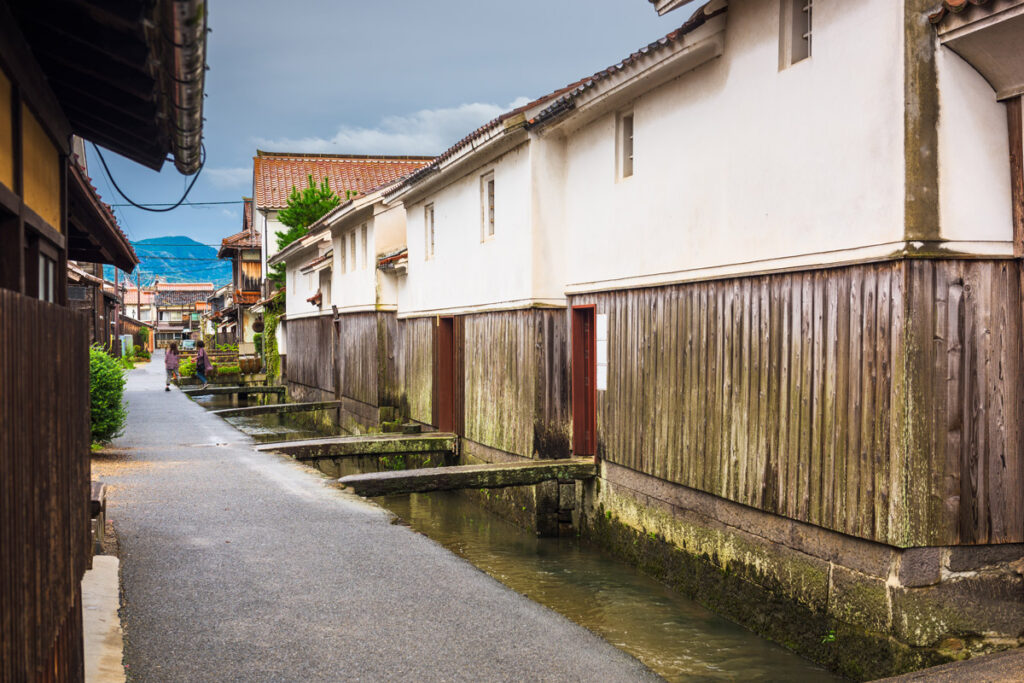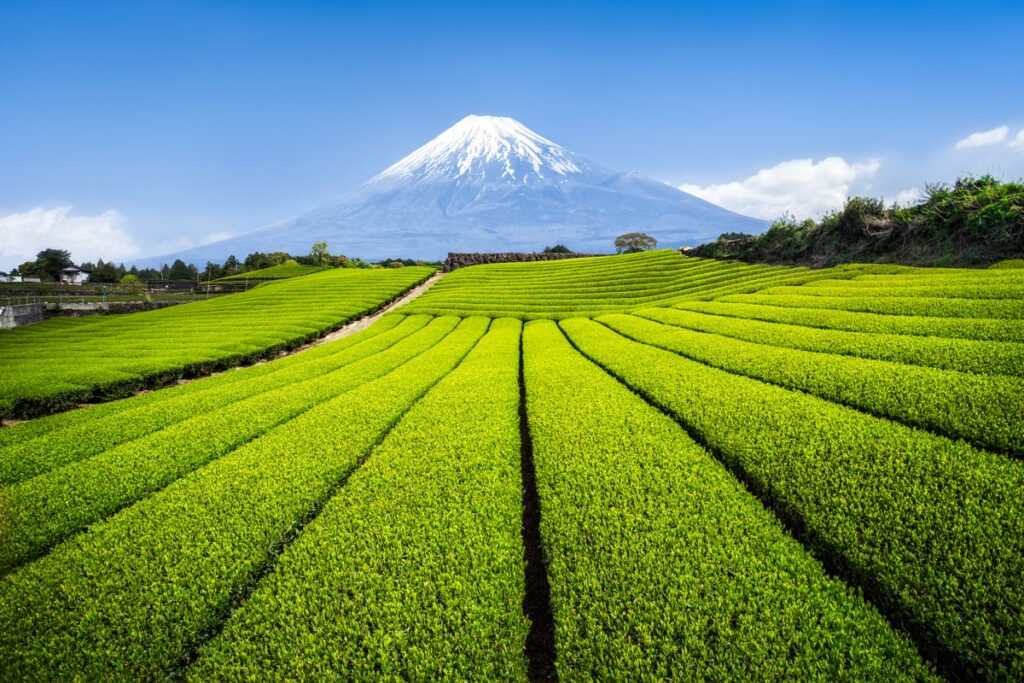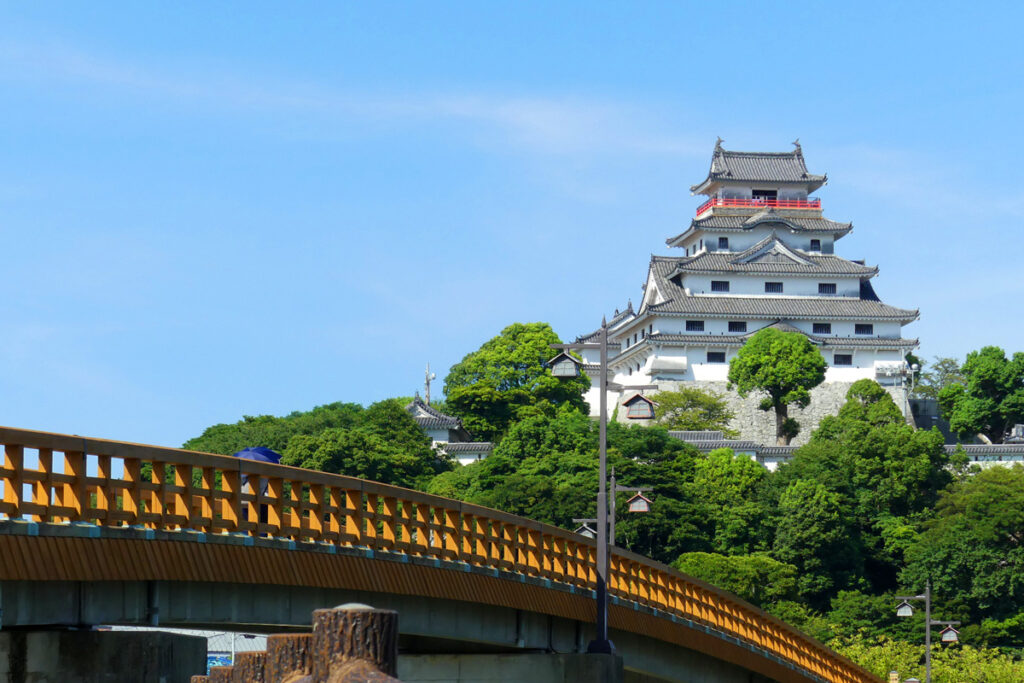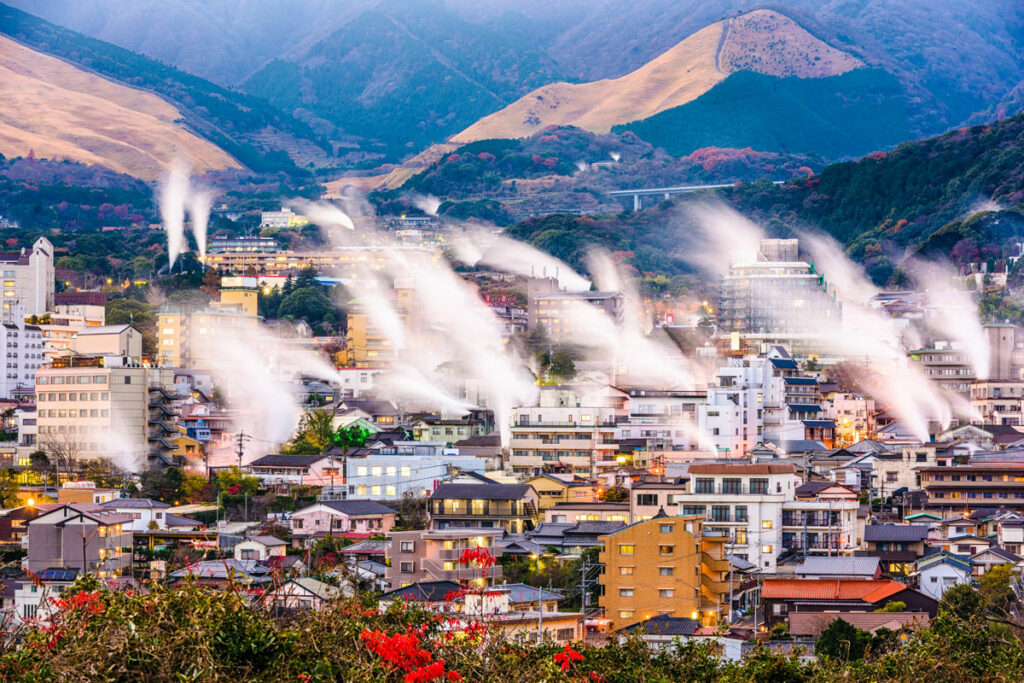Fukushima is a prefecture located in the Tohoku region of Japan, famous for its natural beauty, rich history, and unique culture. Despite the 2011 nuclear disaster, Fukushima has made significant strides in rebuilding and revitalizing its tourism industry. From picturesque lakes and mountains to historic castles and hot springs, there are plenty of top-rated things to do in Fukushima that will leave a lasting impression on any visitor. In this article, we’ll take a closer look at 12 Top-Rated Things to do in Fukushima prefecture. Whether you’re a nature lover or a history buff, there’s something for everyone to enjoy in Fukushima.
1. Lake Inawashiro
One of the largest lakes in Japan, Lake Inawashiro offers stunning views of the surrounding mountains and is a popular spot for boating and water sports.

Lake Inawashiro is a breathtaking natural wonder located in the heart of Fukushima Prefecture. As one of the largest lakes in Japan, Lake Inawashiro offers visitors stunning views of the surrounding mountains and an array of exciting activities to enjoy.
One of the most popular ways to experience the beauty of Lake Inawashiro is by taking a boat ride. There are several different types of boats available for rent, including paddle boats and motor boats. Cruising along the calm waters of the lake is a peaceful and relaxing way to take in the natural scenery and enjoy the fresh air. Lake Inawashiro is a must-visit destination for anyone traveling to Fukushima.
Website: https://fukushima.travel/
Address: Nagahama-870 Okinasawa, Inawashiro, Yama District, Fukushima 969-3285
Reviews. Visit: TripAdvisor
2. Tsuruga Jo
This impressive castle, also known as Aizu-Wakamatsu Castle, was built in the 14th century and is one of the few remaining original castles in Japan.

Tsuruga Jo, also known as Aizu-Wakamatsu Castle, is a remarkable piece of history and one of the most impressive castles in Japan. Built in the 14th century, this castle has stood the test of time and remains one of the few remaining original castles in the country.
Visitors to Tsuruga Jo can explore the castle’s grounds and experience a glimpse into Japan’s feudal past. The castle’s towering walls, impressive gates, and traditional architecture are a testament to the skill and craftsmanship of the castle’s builders. For those interested in Japanese history, Tsuruga Jo is a must-visit destination. Its grandeur and rich history make it an unforgettable experience and a true gem of Fukushima Prefecture.
Official Website: https://www.tsurugajo.com/
Address: 1-1 Otemachi, Aizuwakamatsu, Fukushima 965-0873
Reviews Visit: TripAdvisor
3. Goshikinuma Ponds
These colorful ponds are located in Bandai-Asahi National Park and are a popular spot for hiking and nature walks.

The Goshikinuma Ponds are a stunning natural wonder located within the Bandai-Asahi National Park in Fukushima Prefecture. The name “Goshikinuma” translates to “five-colored ponds,” which refers to the vibrant colors of the ponds’ waters, ranging from emerald green to deep blue.
Visitors to the Goshikinuma Ponds can take a leisurely stroll along the hiking trail that winds through the park, taking in the breathtaking scenery along the way. The trail passes by each of the five ponds, allowing visitors to get an up-close look at the unique colors and formations of each one. Whether you’re an avid hiker or just looking for a peaceful nature walk, the Goshikinuma Ponds are a must-see destination for anyone visiting Fukushima Prefecture.
Official Website: https://www.urabandai-inf.com/
Address: Kengamine Hibara, Kitashiobara, Yama District, Fukushima 966-0501
Reviews Visit: TripAdvisor
4. Aquamarine Fukushima
Aquamarine Fukushima – This aquarium in Iwaki City is home to a variety of marine life, including dolphins, sharks, and sea turtles.

Aquamarine Fukushima is a spectacular aquarium located in Iwaki City, Fukushima Prefecture. This aquarium is home to a wide variety of marine life, ranging from small fish to large mammals like dolphins and sea turtles.
Visitors to Aquamarine Fukushima can explore the aquarium’s many exhibits, which showcase the fascinating world of underwater creatures. One of the most popular exhibits is the Dolphin Stadium, where visitors can watch these intelligent and playful animals perform a variety of tricks and acrobatics. Aquamarine Fukushima is a must-visit destination for anyone interested in marine life and conservation.
Official Website: https://www.aquamarine.or.jp/
Address: 971-8101 Fukushima, Iwaki, Onahama, Tatsumicho−50
Reviews Visit: TripAdvisor
5. Higashiyama Onsen
This historic hot spring town has been a popular destination for centuries and is known for its relaxing waters and stunning scenery.

Higashiyama Onsen is a historic hot spring town located in Fukushima Prefecture that has been a popular destination for centuries. The town is known for its relaxing hot springs and stunning natural scenery, making it an ideal place to unwind and escape the stresses of everyday life.
Visitors to Higashiyama Onsen can take a stroll through the town’s charming streets, which are lined with traditional buildings, shops, and restaurants. The town’s hot springs are located throughout the area, and visitors can choose from a variety of public and private baths to soak in. For those looking to experience a true taste of traditional Japanese culture and relaxation, Higashiyama Onsen is a must-visit destination. The town’s historic charm, natural beauty, and soothing hot springs make it an unforgettable experience for visitors of all ages.
Official website: https://www.mukaitaki.com/
Address: Kawamukai-200 Higashiyamamachi Oaza Yumoto, Aizuwakamatsu, Fukushima 965-0814
Reviews visit: TripAdvisor
6. Bandai Azuma Skyline
This scenic drive offers breathtaking views of Mount Bandai and the surrounding landscape.

The Bandai Azuma Skyline is a scenic drive located in Fukushima Prefecture that offers breathtaking views of Mount Bandai and the surrounding landscape. This 28-kilometer road winds through the mountains and features numerous lookout points where visitors can stop and take in the stunning scenery.
Along the way, visitors can enjoy panoramic views of Mount Bandai, a majestic volcanic mountain that dominates the surrounding landscape. The road also passes through the Bandai-Asahi National Park, which is home to a wide variety of flora and fauna. The breathtaking views and peaceful atmosphere are sure to leave a lasting impression on any visitor.
Website: https://www.f-kankou.jp/en/
Route: Azuma Skyline Tour Bus
Reviews Visit: TripAdvisor
7. Bandai Asahi National Park
This expansive park is home to a variety of outdoor activities, including hiking, skiing, and camping.

Bandai Asahi National Park is a vast park located in Fukushima Prefecture that is renowned for its stunning natural beauty and wide range of outdoor activities. This expansive park covers an area of over 186,000 hectares and is home to a diverse range of flora and fauna.
One of the most popular activities in Bandai Asahi National Park is hiking, with numerous trails winding through the mountains and forests. Visitors can enjoy breathtaking views of Mount Bandai, as well as the park’s many lakes, waterfalls, and streams. Whether you’re an outdoor enthusiast or simply looking for a peaceful escape into nature, Bandai Asahi National Park has something for everyone.
Website: https://www.env.go.jp/park/bandai/
Address: Nishiokitama District, Yamagata
Reviews Visit: TripAdvisor
8. Ouchijuku Village
This historic village is famous for its traditional thatched-roof houses and is a great place to experience Japan’s rural culture.

Ouchijuku Village is a historic village located in Fukushima Prefecture that is famous for its traditional thatched-roof houses and is a great place to experience Japan’s rural culture. The village is situated along the old Edo period highway that connected Aizu with Nikko, and its streets are lined with traditional houses that have been preserved for over 300 years.
Visitors to Ouchijuku can experience traditional Japanese culture firsthand, with many of the buildings now functioning as shops and restaurants that serve local specialties. The village also features several historic landmarks, including the Ouchijuku Honjin, a former inn that served travelers during the Edo period, and the nearby Shimogo Town History and Folklore Museum. Ouchijuku Village is a great destination for those looking to experience traditional Japanese culture and history in a peaceful rural setting.

Official Website: https://ouchi-juku.com/
Address: Ouchi, Shimogo, Minamiaizu District, Fukushima 969-5207
Reviews Visit: TrpAdvisor
9. Tadami River
This picturesque river is a popular spot for rafting and kayaking and offers stunning views of the surrounding mountains.

The Tadami River is a picturesque river located in Fukushima Prefecture that is a popular spot for Tadami River Bridge Scenic Spot. The river winds through the rugged mountain landscape, offering stunning views of the surrounding scenery and providing a thrilling adventure for outdoor enthusiasts.
The Tadami River is a great destination for those looking to experience the natural beauty of Fukushima Prefecture. Visitors can take part in a variety of water activities, such as rafting, kayaking, and canoeing, and enjoy the rush of the rapids and the beauty of the surrounding landscape. Visitors can explore the area’s many waterfalls, hot springs, and other natural attractions, making the Tadami River a great destination for outdoor adventure and relaxation.
Website: https://www.michi-no-eki.jp/stations/views/19028
Address: 天屋原-610 Kawai, 三島町 Mishima, Onuma District, Fukushima 969-7515
Reviews Visit: TripAdvisor
10. J Village
This sports complex was used as a base for the recovery efforts following the Fukushima nuclear disaster and is now a popular destination for soccer fans.

J Village is a sports complex located in Fukushima Prefecture that was originally built as a training center for Japan’s national soccer teams. However, following the Fukushima nuclear disaster in 2011, the complex was used as a base for the recovery efforts, including as a place for workers to stay and as a logistics center.
Since then, J Village has become a symbol of resilience and recovery in the region and is now a popular destination for soccer fans. The complex features multiple soccer fields, a hotel, restaurants, and shops, and hosts a variety of soccer-related events throughout the year, including training camps, matches, and tournaments. J Village is a great destination for sports enthusiasts and anyone interested in learning more about the recovery efforts following the Fukushima nuclear disaster.
Website: https://j-village.jp/
Address: 979-0513 Fukushima, Futaba District, Naraha, Yamadaoka, Utsukushimori−8
11. Abukuma Caves
These natural limestone caves are located in Tamura City and offer a unique underground adventure.

The Abukuma Caves are a natural wonder located in Tamura City, Fukushima Prefecture. The limestone caves were formed over millions of years and offer a unique underground adventure for visitors to the area. The Abukuma Caves are a popular destination for those interested in geology and natural history, as well as for those seeking an exciting underground experience. Visitors can explore the cavernous chambers of the caves, marveling at the intricate rock formations and learning about the history and geology of the area. The Abukuma Caves offer a unique and fascinating experience for those looking to explore the natural wonders of Fukushima Prefecture
Website: http://abukumado.com/
Address: 963-3601 Fukushima, Tamura, Takinemachi Sugaya, Higashikamayama−1
Reviews Visit: TripAdvisor
12. To no Hetsuri
This stunning rock formation is located along the Abukuma River and is a popular spot for hiking and nature walks.

To no Hetsuri is a beautiful and unique rock formation located along the Abukuma River in Fukushima Prefecture. The formation is a popular spot for hiking and nature walks, with stunning views of the surrounding landscape.
To no Hetsuri translates to “the cliffs that touch the sky,” and the name is certainly fitting. The towering rock formations, shaped by millions of years of erosion, create a breathtaking sight that is not to be missed. Visitors can hike along the riverbank, taking in the beautiful scenery and enjoying the fresh air. To no Hetsuri is a must-see destination for anyone visiting the area, offering a unique and awe-inspiring natural wonder that is sure to leave a lasting impression.
Website: https://shimogo.jp/
Address: Shitabayashi-5316 Yagoshima, Shimogo, Minamiaizu District, Fukushima 969-5204
Fukushima Prefecture is truly a hidden gem of Japan, offering a wide variety of stunning natural landscapes and cultural experiences for visitors to enjoy. From the majestic Lake Inawashiro to the impressive Tsuruga Jo castle, the region is filled with top-rated destinations that are sure to impress. Whether you are interested in hiking, water sports, or simply immersing yourself in Japanese culture, Fukushima has something to offer everyone. Fukushima Prefecture is a destination that should not be missed. With its beautiful landscapes, rich history, and unique cultural experiences, it is the perfect place to explore and create unforgettable memories.
Where to stay in Fukushima for Sightseeing
You may wonder where to stay for sightseeing in Fukushima. Whether you’re looking for luxury, mid-range or budget accommodation, we have got you covered. Here is our list of top hotels to stay in Fukushima for an unforgettable sightseeing experience.
Luxury:
Onyado Kawasami Ryokan– An impeccable, top rated luxury onsen Ryokan ( Traditional Japanese -style )hotel. It offers an amazing kaiseki cuisine.
Kagetsu Highland Hotel– Experience Japan to the fullest by enjoying your stay in this grand hotel to experience the essence of Japan’s nature.
Mid – Range Hotels:
Hotel Listel Inawashiro Wing Tower– The resort features multiple casual dining options, a relaxed bar and a spa, plus a gym, golf and tennis. There are also several hot spring baths, and indoor and outdoor (seasonal) pools. Breakfast, parking and a train station shuttle are available. Also Listel Ski Fantasia is very conveniently located within the property of Listel Hotel Inawashiro.
Richmond Hotel Fukushimaekimae – A business trip or family trip, a way to go hotel with spacious rooms. Located close to the Fukushima station.
Sansuiso – Set on the banks of the Arakawa River, this sophisticated hot spring inn is a 6-minute walk from a bus stop. A pocket friendly Japanese-style luxurious accommodation
Budget – Hotels:
GrandPark Hotel Excel Fukushima Ebisu– A luxury experience in a budget friendly hotel. It is 4 minutes walk to JR Fukushima station. A large popular breakfast buffet where you can enjoy a rich menu of about 40 Japanese and Western style cuisines.
The Celecton Fukushima– A budget friendly hotel Its just about 1 minute walk from Fukushima Station West Exit. It is also the closest hotel to the Shinkansen platform.
FAQs
What is the best time to visit Fukushima for sightseeing?
The best time to visit Fukushima for sightseeing is during the spring and autumn seasons when the weather is mild and comfortable, and the scenic views are at their best.
How can I get to Fukushima?
Fukushima is easily accessible by train, bus or car. By Shinkansen Fukushima station is the best option to reach this Fukushima Prefecture, and buses are also available from major cities like Tokyo and Sendai
What are the top attractions in Fukushima?
Some of the top attractions in Fukushima include Lake Inawashiro, Tsuruga Jo castle, Goshikinuma Ponds, Aquamarine Fukushima, Higashiyama Onsen, Bandai Azuma Skyline, Ouchijuku Village, Tadami River, J Village, Abukuma Caves, To no Hetsuri and much more.
What types of accommodations are available in Fukushima?
There is a wide range of accommodations available in Fukushima, including luxury hotels, mid-range hotels, budget hotels, guesthouses, and ryokans (traditional Japanese inns).
Is Fukushima safe to visit after the 2011 nuclear disaster?
Yes, Fukushima is safe to visit after the 2011 nuclear disaster. The Japanese government and local authorities have taken extensive measures to ensure the safety of the region and its residents, including thorough decontamination efforts and ongoing radiation monitoring.









